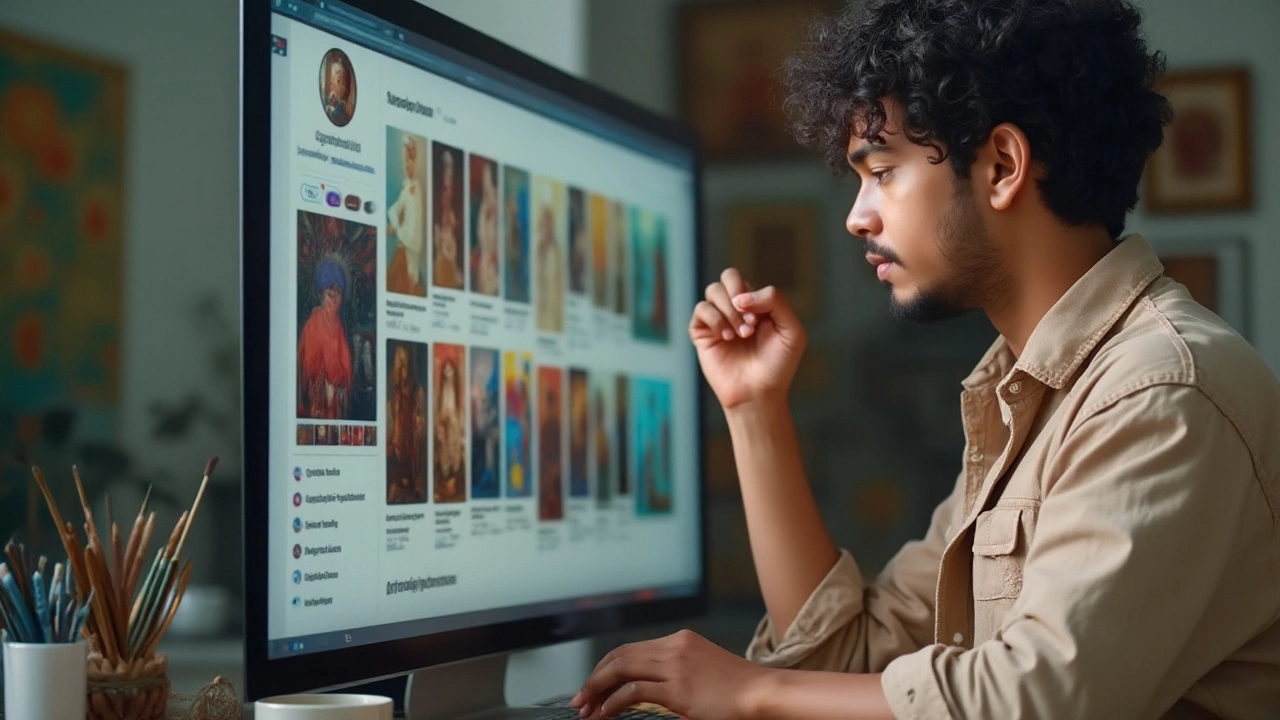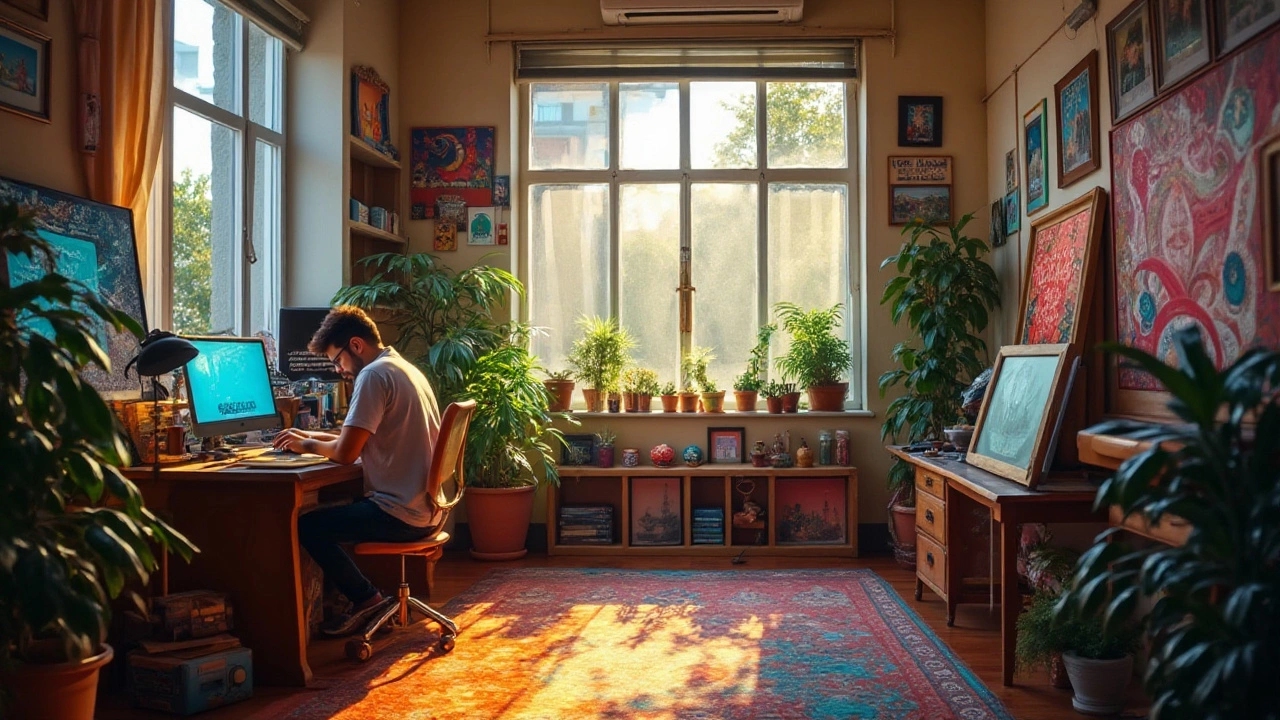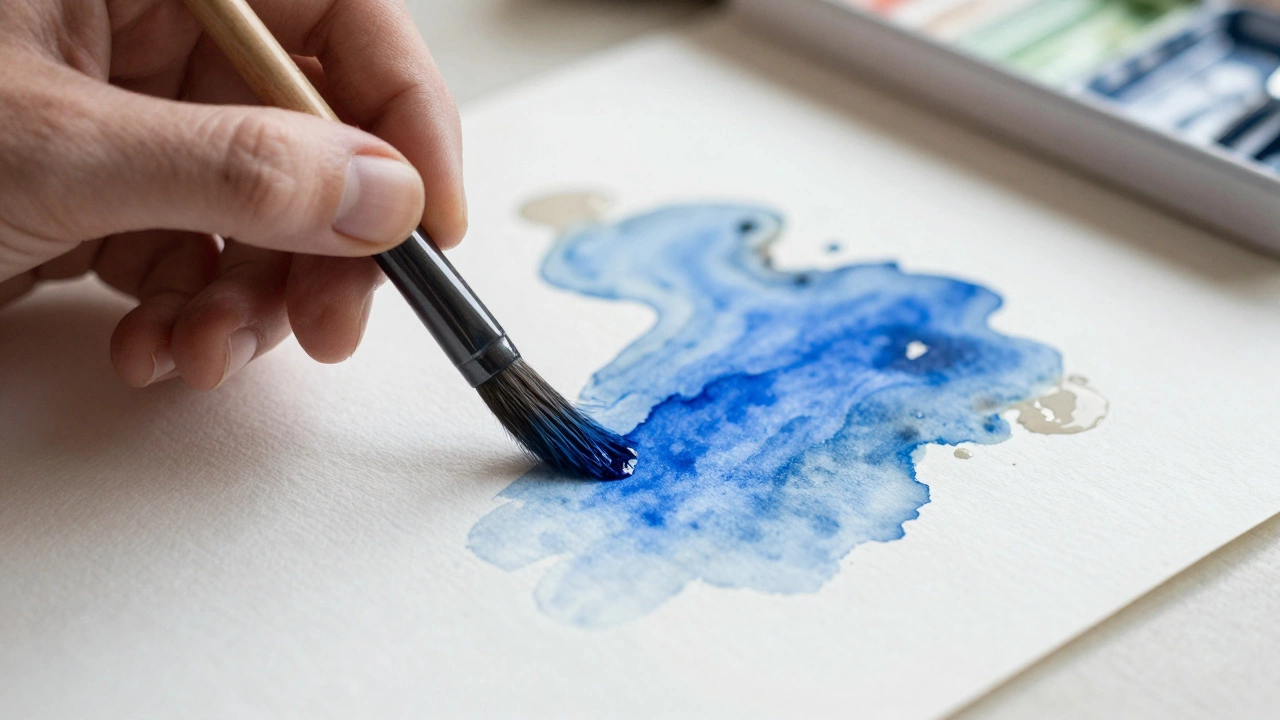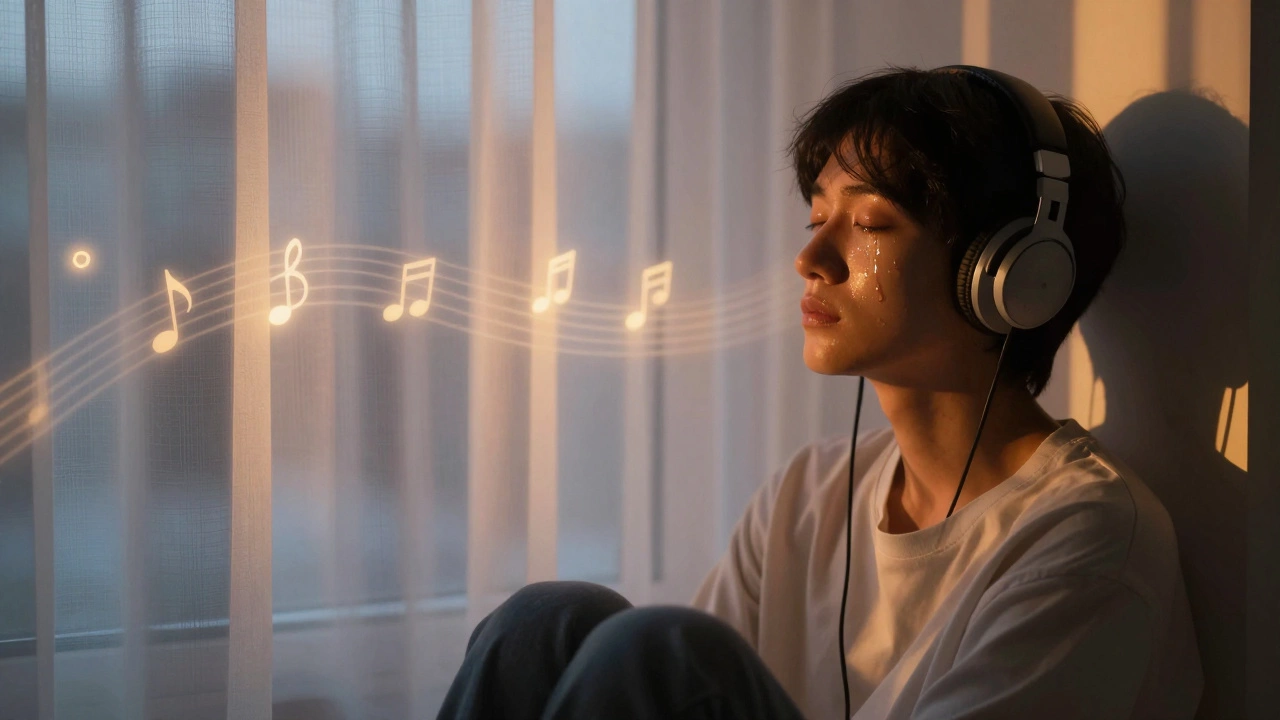Diving into the world of selling digital art is both exciting and rewarding. The internet opens up endless possibilities for artists to reach global audiences and turn creativity into a sustainable business. However, navigating this landscape requires more than just talent; you need to know the ropes of the digital marketplace.
Starting with a solid digital portfolio is crucial. This acts as your artistic résumé, showing your style, ideas, and the range of your work. Once you have that, picking the right platforms to showcase and sell your art can significantly influence your reach and success. From mainstream platforms like Etsy and DeviantArt to niche marketplaces specifically for digital creators, your choice depends on your goals and target audience.
Setting the right price for your art isn’t just about monetary value, but also about understanding the worth of your creation and the market demand. Lastly, promotion, especially through social media, is your gateway to the world. Using these platforms smartly can greatly increase your visibility and sales.
- Building Your Digital Portfolio
- Choosing the Right Marketplace
- Pricing Strategies for Digital Art
- Promoting Your Art Online
Building Your Digital Portfolio
Creating a digital portfolio that stands out is pivotal for any aspiring digital artist looking to sell their art. Start by curating a collection of your best works. This is the first thing potential buyers or collaborators will see, so it needs to make a lasting impression. When selecting what to include, aim for diversity without straying from your unique style. Showcasing various techniques and themes is a great way to highlight your versatility, but consistency is key to communicating your artistic identity.
A crucial element of a compelling portfolio is quality over quantity. Rather than including every piece you've ever made, select those that highlight your strongest skills and creative vision. Ensure each work in your portfolio is presented in high resolution to convey the intricacies of your craft. High-quality visuals not only reflect professionalism but also respect for your art and audience.
Organizing your portfolio is just as important as the content itself. Consider creating categories or sections that guide viewers through your art efficiently. This might mean grouping similar styles or themes together, such as abstracts, landscapes, or conceptual art. Use short, descriptive texts or titles for each piece to provide context or insight into your creative process. Having a well-structured portfolio makes it easier for potential clients to find what resonates with them.
Having your portfolio available online is essential. Platforms like Behance, ArtStation, or your own dedicated website allow easy access for an international audience. These platforms also provide great networking opportunities and exposure to a community of likeminded creators. When setting up, prioritize ease of navigation and ensure that your contact information is easily accessible for interested parties.
Consider including a section about your artistic influences and philosophy. This personal touch can create a connection with viewers, allowing them to understand the story behind your creations. Not only does this make your work more relatable, but it also differentiates your portfolio from others, highlighting the personal aspect of your artistry. Sometimes, this narrative is what makes a piece resonate and ultimately motivates a buyer's decision.
Professionalism is a must when showcasing your work. Ensure that all webpage or platform interactions, like image loading and layout, are smooth and visually appealing. First impressions matter greatly, and a tidy, well-functioning presentation can enhance the perceived value of your art. Conversely, poorly managed interfaces can deter even the most interested parties from exploring further.
In today's fast-paced digital age, social media plays a crucial role in circulating your portfolio. An active presence on platforms like Instagram or TikTok can direct traffic to your dedicated portfolio and create a fan base. Regularly updating your social platforms with new art or insights into your creative process keeps your audience engaged and invested in your journey.

Choosing the Right Marketplace
The world of digital art has been revolutionized by the internet, providing artists with opportunities that were unimaginable a few decades ago. Selecting the right marketplace is a crucial step when you decide to sell digital art. It's more than just a venue; it's where your art meets its audience, and where your career could take flight. When exploring marketplaces, consider factors like audience demographics, platform fees, and the type of artists that dominate the space. Etsy, known for handmade and vintage items, has become a favorite for many artists due to its large customer base and established reputation. However, platforms like DeviantArt are tailor-made for visual artists, boasting a community of art enthusiasts, providing not just exposure, but constructive feedback from fellow creators.
On the other hand, if you're targeting tech-savvy buyers, platforms like OpenSea, which cater to digital art and NFTs, might offer better opportunities. These NFT marketplaces have shown immense growth and create unique opportunities to monetize art. Having detailed knowledge about each marketplace will save time and increase your success rate. According to Artsy, "The right platform defines your market engagement, directly influencing your sales trajectory." Pick platforms that align with your artistic values and business goals.
Consider the fees involved, as they can eat into your profits if not carefully managed. Many platforms take a percentage of each sale, which varies widely. Some might also charge a listing fee. It is essential to perform a cost-benefit analysis to ensure you are not losing out. Another critical aspect is the marketplace's supporting services – from customer service to ease of transaction processing. Community involvement and additional features like customized storefronts can also enhance your experience. Additionally, some platforms offer promotion tools or analytics that help you understand and increase your artwork’s visibility, offering immense value for artists willing to invest their time into learning these intricacies.
"Understanding your market is as important as understanding your art." — Unknown
To give you a broader view, here’s a simple comparison of key features and fees associated with popular platforms:
| Platform | Audience | Fees | Special Features |
|---|---|---|---|
| Etsy | Handcrafted and artistic items enthusiasts | Listing fee ($0.20/item) + 5% transaction fee | Custom storefronts |
| DeviantArt | Art community | 20% of earnings for free membership | Community critique |
| OpenSea | Crypto and NFT collectors | 2.5% of sales | Blockchain technology for ownership |
Ultimately, selecting the right art marketplace is about finding a balance between your artistic freedom, financial goals, and audience engagement. Do your homework, test out different platforms, and choose the one that resonates most with your artistic and business ambitions. Stay open to new and evolving spaces to keep your art practice fresh and marketable.

Pricing Strategies for Digital Art
Finding the right pricing strategy for your digital art can feel like trying to solve a complex puzzle. The price should reflect not only the time and effort put into the creation but also market trends and the perceived value by potential buyers. One of the first steps is understanding your costs and evaluating what it takes to create your art. This can include software subscriptions, digital tools, and even the amount of time spent crafting each piece. Having a clear understanding of these costs can help you establish a baseline price that can keep your business sustainable.
Another important factor is researching what other artists in your niche are charging. Sites like Etsy and ArtStation make it relatively easy to browse artworks similar to yours and gain insights into their pricing structures. However, remember that their prices aren't necessarily a template you should follow blindly. Consider your unique skills, experience, and the distinctiveness of your art when setting your price. Trends show that digital artists who have niche styles or who are established in specific communities often have more freedom to set higher prices.
Monetize art through online platforms which often have their own recommendations and tools that can assist. For instance, platforms like Patreon allow artists to receive consistent income from dedicated fans in exchange for exclusive content. By offering different tiers of support, from simple access to unique items like personalized artworks or even tutorials, artists can create diversified revenue streams. A well-tested approach is the 'Pay What You Want' model, which lets buyers choose how much to pay, often leading to higher average sales than fixed pricing.
One often overlooked aspect is psychological pricing—ending your price in a '9' or using round numbers can make your art seem more attractive. A piece priced at $99 might be perceived as significantly less than one at $100 by a potential buyer’s subconscious. Alongside this, offering limited-time discounts or including a second piece at a lower combined rate can encourage buyers to make a purchase more quickly, taking advantage of the deal. As art is often seen as an emotional purchase, these little techniques can make a noticeable difference.
"Don’t let the market dictate what your art is worth. Instead, let the market validate your valuation," says renowned digital artist Jane Doe, whose work has garnered global acclaim.
As you set your pricing strategies, ensure they are adaptable. Monitor the sales performance of your strong-selling pieces and adjust as necessary, as keeping abreast of trends within your chosen platforms is crucial. Some artists use a strategy called 'dynamic pricing', which involves adjusting prices seasonally or based on demand. This could mean increasing prices during peak buying times, such as the holiday season, or offering artworks at lower prices during quieter periods to keep sales consistent.
Incorporating data into your pricing strategy can offer a science-based counterbalance to your artistic intuition. An internal study of a well-known art marketplace suggested that over 60% of the highest selling digital artworks were priced between $50 and $200, showing a sweet spot for buyers. Apart from quantitative factors, engage with customers and seek feedback, which can provide invaluable insights into how your pricing is perceived and adjustments that might be necessary to align with your market.

Promoting Your Art Online
Navigating the digital landscape to effectively promote your digital art is as crucial as creating the art itself. In today's interconnected world, social media platforms act as gateways to potential customers and admirers. But with so many artists showcasing their work online, standing out requires strategy and creativity. Starting with social media, Instagram remains a favorite among visual artists due to its image-centered interface. Here, consistency in posting and maintaining a cohesive aesthetic can create a visually appealing profile that draws followers in. Hashtags remain vital, so including popular ones like #DigitalArt or #ArtCollective can increase the chances of discovery. Don't shy away from using Instagram's features like Stories and Reels to provide behind-the-scenes content. These features enhance engagement by allowing followers to connect with the artist's process and personality.
Beyond social media, participating in online art forums and communities can boost your profile. Websites like DeviantArt and ArtStation are not only fantastic for inspiration but also serve as networking havens where artists can share their work with like-minded individuals. Engaging in discussions or collaborations through these platforms can often lead to significant visibility boosts. Furthermore, consider starting an email newsletter. This may seem old school amidst modern platforms, but its effectiveness remains unmatched. Offer subscribers exclusive content or previews, giving them reasons to stay invested in your journey. According to a study by HubSpot, email marketing generates an average return of $42 for every dollar spent, highlighting its unmatched value.
Employing a mixed approach is often the best strategy. A personal website or blog can serve as the central hub for your work, gathering all your creations and thoughts in one place. This not only showcases professionalism but also acts as a direct sales point for those wishing to purchase directly from the artist. When designing your site, keep SEO in mind; using appropriate keywords like digital art selling and monetize art ensures that your creations appear prominently in search results. Adding a blog to share personal insights and the stories behind your art can humanize your brand and deepen the connection with your audience.
Promoting digital art is not just about exposure but building connections. Virtual events such as webinars or live streams on platforms like Twitch can offer interactive opportunities to engage with potential buyers and fellow artists alike. Demonstrating art techniques or participating in art challenges live not only shares your expertise but also builds your personal brand. According to Forbes, live streaming is a powerful tool for not only reaching wider audiences but also for creating real-time relationships, which can often result in sales. An engaging, consistent online presence is key to thriving in the competitive digital art market.





